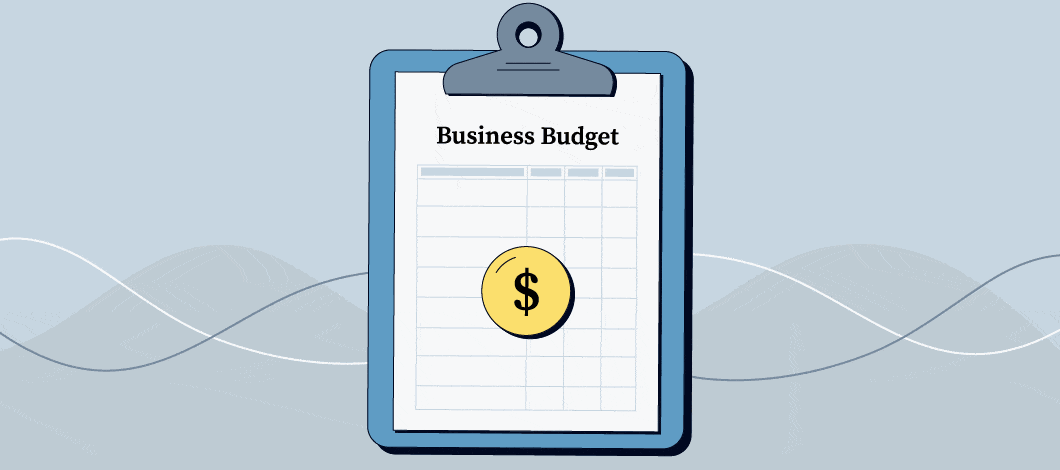Financial freedom means having sufficient income, investments, and savings to freely make life decisions without being heavily constrained by money. A Financial Freedom Plan is a strategic blueprint that guides you toward achieving long-term financial independence. It outlines actionable steps, milestones, and tactics to build wealth, manage debt, and secure your financial future.
Key Takeaways
- Understanding your current financial position is the foundation.
- Budgeting, emergency funds, and debt repayment are essential early-stage strategies.
- Investing early and diversifying assets accelerates wealth growth.
- Tax planning, insurance, and legacy planning protect your long-term financial health.
Why Should I Create a Financial Freedom Plan?
What Are the Benefits of Financial Clarity?
- Focus and Direction: A written plan turns abstract goals into actionable steps.
- Stress Reduction: Knowing your finances gives you control and reduces anxiety.
- Early Retirement Options: Strategic planning lets you explore early retirement or career pivots.
How Does a Plan Help Me Avoid Common Pitfalls?
- Impulse Spending: Budgets curb lifestyle inflation.
- High-Interest Debt: Focused repayment plans avoid long-term interest burdens.
- Lack of Preparation: Planning ensures you’re ready for emergencies, taxes, and retirement.
How Do I Assess My Current Financial Situation?
Where Should I Start?
- Net Worth Analysis
- List your assets (e.g., bank accounts, investments, properties) and liabilities (e.g., loans, credit card debt).
- Calculate Net Worth = Assets − Liabilities.
- Cash Flow Review
- Track monthly income sources.
- Catalog fixed (rent, insurance) and variable (groceries, entertainment) expenses.
- Identify potential savings opportunities.
What Tools Can Help?
- Spreadsheets (Google Sheets/Excel): Complete flexibility.
- Budgeting apps: Mint, YNAB, PocketGuard.
- Net worth trackers: Personal Capital.
How Do I Set Financial Freedom Goals?
What Should My Goals Include?
- Short‑Term (1–2 years): Build emergency fund, eliminate small debt.
- Mid‑Term (3–7 years): Pay off car loan or student loans, save for down payment.
- Long‑Term (>10 years): Achieve net worth target, retire early, fund children’s education.
How Can I Make Them SMART?
- Specific: E.g., “Save ₹200,000 for emergency fund.”
- Measurable: Track progress monthly.
- Achievable: Build on current financial habits.
- Relevant: Align with lifestyle and values.
- Time‑Bound: Link each goal to a clear deadline.
What Is the Role of Budgeting and Expense Tracking?

Why Budgeting Matters
- Prevents overspending.
- Frees up money for saving, investing, or debt repayment.
- Increases awareness of habits and spending triggers.
How Can I Build a Budget?
- Use the 50/30/20 rule:
- 50% for needs
- 30% for wants
- 20% for savings/debt repayment
- Or use zero‑based budgeting (every rupee assigned).
- Review and adjust monthly.
How Important Is an Emergency Fund? {#emergency-fund}
What Size Should It Be?
- 3–6 months’ worth of living expenses.
- More if you have unstable income, health issues, or dependents.
Where to Keep It?
- Liquid and Safe: Savings account or money market fund.
- Easily Accessible: Avoid stock or long‐term lock‑in accounts.
How Do I Tackle Debt Strategically?
Which Repayment Method Should I Use?
- Avalanche Method: Pay highest‑interest debts first.
- Snowball Method: Pay smallest debts first to build momentum.
Can Refinancing Help?
- Lower Interest Rates: When credit score improves or new offers arise.
- Shorter Loan Terms: Pay less interest overall.
Should I Consolidate Debt?
- Consider if it reduces interest rate and keeps repayment disciplined.
- Beware of fees and extended timelines.
When Should I Start Investing?
Why Early Investing Matters
- Compound Growth: Time exponentially boosts gains.
- Habits: Regular investing fosters discipline.
- Inflation Hedge: Outpacing inflation preserves value.
What Are Core Investment Options?
- Equity: Stocks, mutual funds, ETFs (e.g., Nifty 50, Sensex, global indices).
- Debt: Bonds, PPF, EPF, fixed deposits.
- Alternatives: Real estate, gold, REITs.
How Should I Allocate Assets?
- Use age-based rules (e.g., stocks = 100 − age).
- Consider risk tolerance and time horizon.
How Do I Choose the Right Investment Products?
Which Equity Routes Are Best?
- Index Funds/ETFs: Low cost, broad diversification.
- Actively Managed Funds: Potential for outperformance—but fees are higher.
- Direct Stocks: Great if you can research, but risky without diversification.
How About Debt and Hybrid Options?
- PPF/EPI: Stable, government‑backed returns.
- Debt Funds: Corporate or government bonds.
- Balanced Funds: Blend of equity and debt.
What Role Do Tax‑Advantaged Accounts Play?
- ELSS Funds, PPF: U/S 80C tax deductions.
- NPS: Retirement saving, Section 80CCD.
Should I Automate My Savings?

What Are the Advantages?
- “Set and Forget”: Invest or save before you can spend.
- Consistency: Builds discipline and reduces emotional decisions.
- Time‑Averaging: Rupee cost averaging smooths volatility.
How to Automate?
- Use SIPs in mutual funds.
- Set up recurring transfers to savings/investments.
- Use employer payroll-based deductions for PF or NPS.
How Do I Maximize Tax Efficiency?
What Are Key Tax-Saving Avenues?
- 80C Investments: ELSS, PPF, PF, insurance, tuition fees.
- Home Loan: Deduct principal under 80C and interest under 24(b).
- Health Insurance Premiums: 80D deduction.
- NPS: Additional 80CCD(1B) ₹50,000 deduction.
How Should I Plan My Taxes?
- Lock in early: Use before-year-end schemes.
- Harvest losses: Offset capital gains with losses.
- Reinvest smartly: Tax-saving mutual funds, retirement accounts.
How Should I Manage Risk and Insurance?
What Insurance Policies Are Essential?
- Term Life: To protect dependents if you pass away.
- Health Insurance: Including critical illness or hospitalization.
- Disability/Income Protection: Covers you if you can’t work.
Is Asset Protection Important?
- Homeowners/Renters Insurance
- Vehicle Insurance
- Umbrella Policies: High-net-worth coverage.
Should I Plan for Big Purchases & Milestones?
What Milestones Require Planning?
- Buying a Home
- College Education
- Destination Events (weddings, travel)
- Replacing Vehicles
How to Approach These Goals?
- Create separate saving buckets.
- Estimate cost and adjust for inflation.
- Time investments near the event date (short-term, low-risk).
How Do I Track and Adjust My Plan?

Which Metrics Matter?
- Net worth (quarterly update).
- Savings rate and investment contributions.
- Debt balances.
- Portfolio performance.
When Should I Pivot?
- Major life events: marriage, kids, job change.
- Economic changes: inflation, recessions.
- Market performance: re-balance when asset mix drifts beyond 5–10%.
What Should I Know About Retirement Planning?
How Much Do I Need?
- Estimate future living costs today, adjust for inflation.
- Multiply annual needs by expected years retired.
- Use retirement calculators.
Which Retirement Accounts to Use?
- EPF & PPF: Secure, tax-advantaged.
- NPS: Tier 1 & 2 contribution flexibility.
- Mutual Funds/Stocks: For greater growth, albeit with risk.
How Should I Sequence Withdrawals?
- Use tax-taxed accounts strategically.
- Integrate annuities or guaranteed income streams.
- Keep bucket for short‑term needs: 3–5 years in safe assets.
Can I Achieve Financial Freedom Faster?
What Accelerates Financial Independence?
- Increase Income: Side hustles, promotions, freelancing.
- Aggressive Saving Rate: 30‑50%+ of income.
- Frugal Lifestyle: Minimize variable and discretionary expenses.
- Smart Investing: Use asset allocation and compounding.
What Is the FIRE Movement?
- FIRE = Financial Independence, Retire Early
- Typical FIRE path involves extreme saving and investing.
- Safe Withdrawal Rate ~4%: For ₹30 lakhs annual retirement need, you need ₹7.5 crores corpus.
How Do I Maintain Financial Freedom?
What Mistakes Should I Avoid?
- Overspending due to sudden Wealth.
- Lacking insurance or risk coverage.
- Ignoring inflation or lifestyle creep.
- Poor estate planning.
What’s the Role of Planning for Next Generations?
- Wills and Trusts
- Gifting strategies
- Financial education for children
Also Read : What Are Finance Courses Online?
Conclusion
A comprehensive Financial Freedom Plan blends disciplined budgeting, tax-smart investing, risk management, and consistent review. Start with clarity on your finances, establish goals, automate processes, and track your journey. Adapt and pivot as life unfolds, and you may not just retire early—you’ll enjoy financial control and peace of mind along the way.
FAQs
1. What is the first step to financial freedom?
The initial step is tracking your income and expenses to know where your money goes. Then create a budget and build a modest emergency fund of ₹50,000–₹100,000.
2. How much should I save each month?
Aim for saving 20% of your income. If you want FIRE, target 30–50% or more.
3. What’s the difference between debt repayment methods?
- Avalanche: Highest interest debts first—mathematically optimal.
- Snowball: Smallest debts first—motivational momentum, even with higher interest.
4. How much emergency fund do I need?
3–6 months of essential living expenses—so if you spend ₹30,000/month, target ₹90,000–₹180,000.
5. Should I invest in mutual funds or the stock market directly?
For most people, index funds or diversified mutual funds are a safer long-term choice. Direct stock investing works if you have research capability and tolerate higher risk.
6. When can I retire early?
Using the 4% rule, every ₹1 needed in annual expenses requires ₹25 of savings/investments. For ₹10 lakhs/year, you’d need ₹2.5 crores.
7. How often should I revisit my financial plan?
Review major metrics quarterly, rebalance investments annually, and update goals after major life events like marriage, kids, or job changes.
